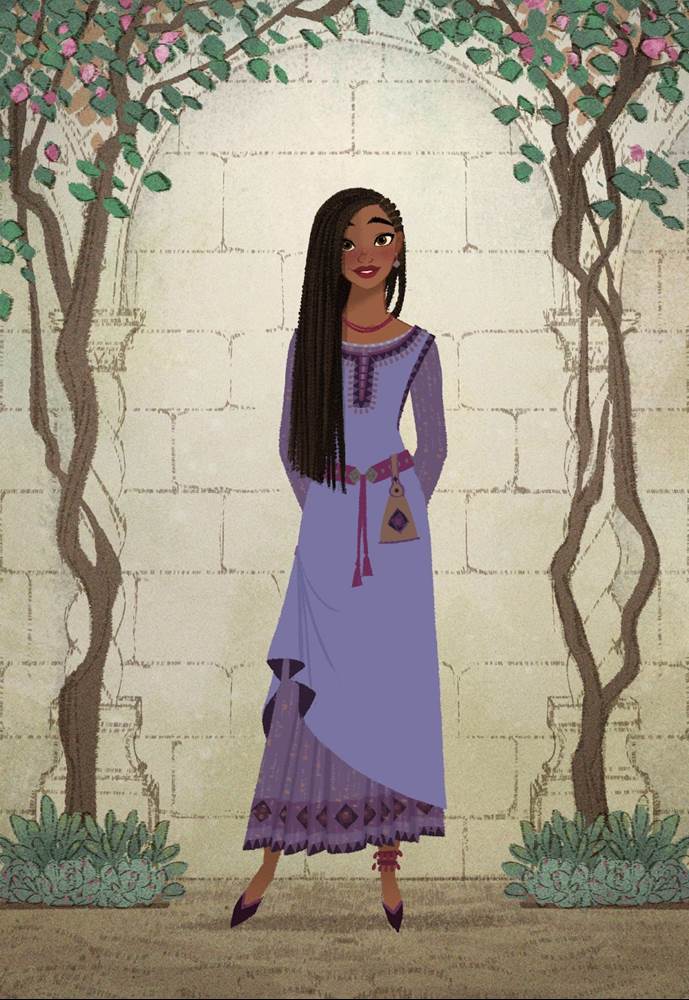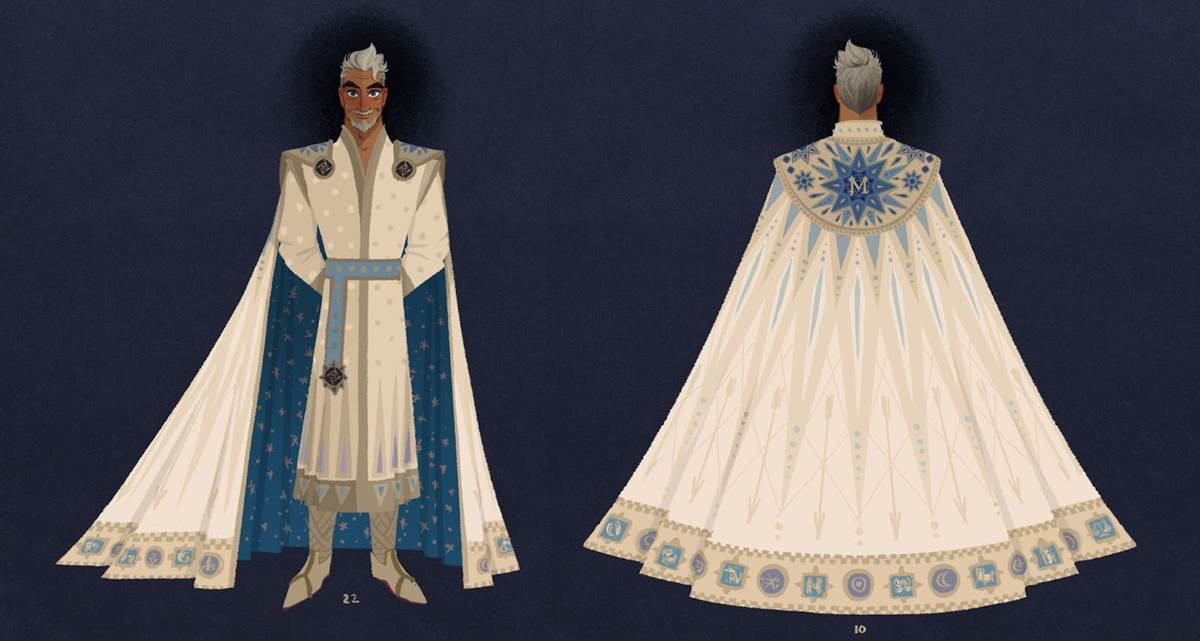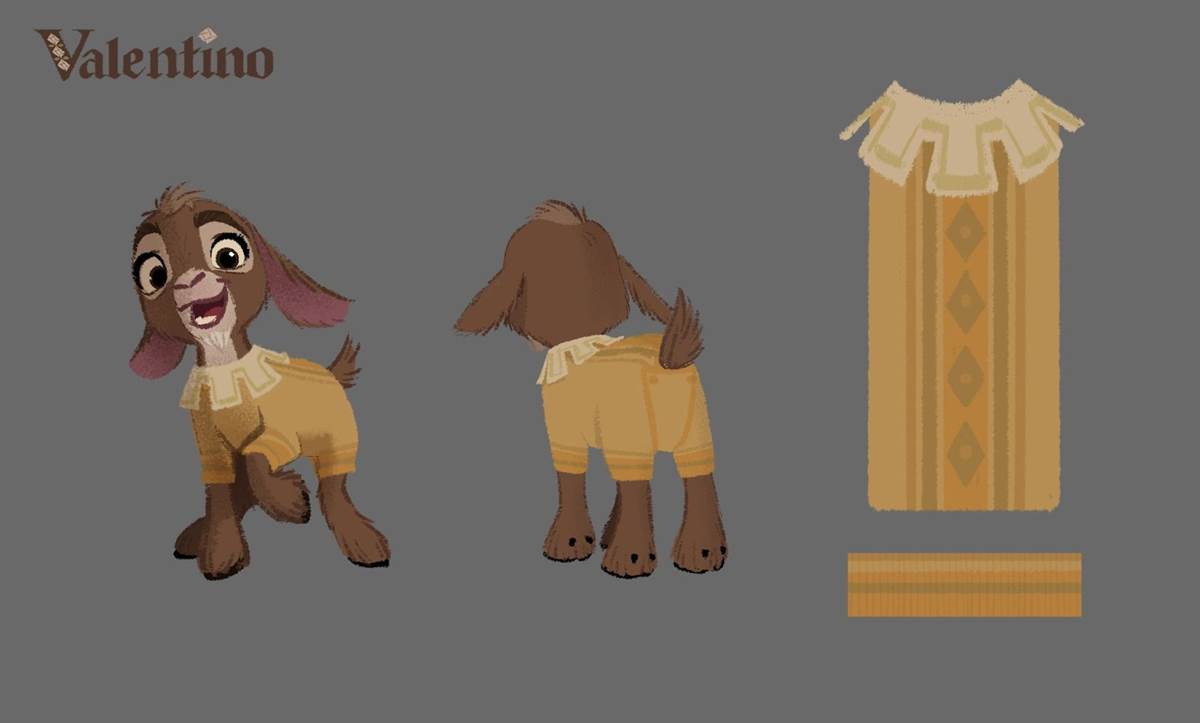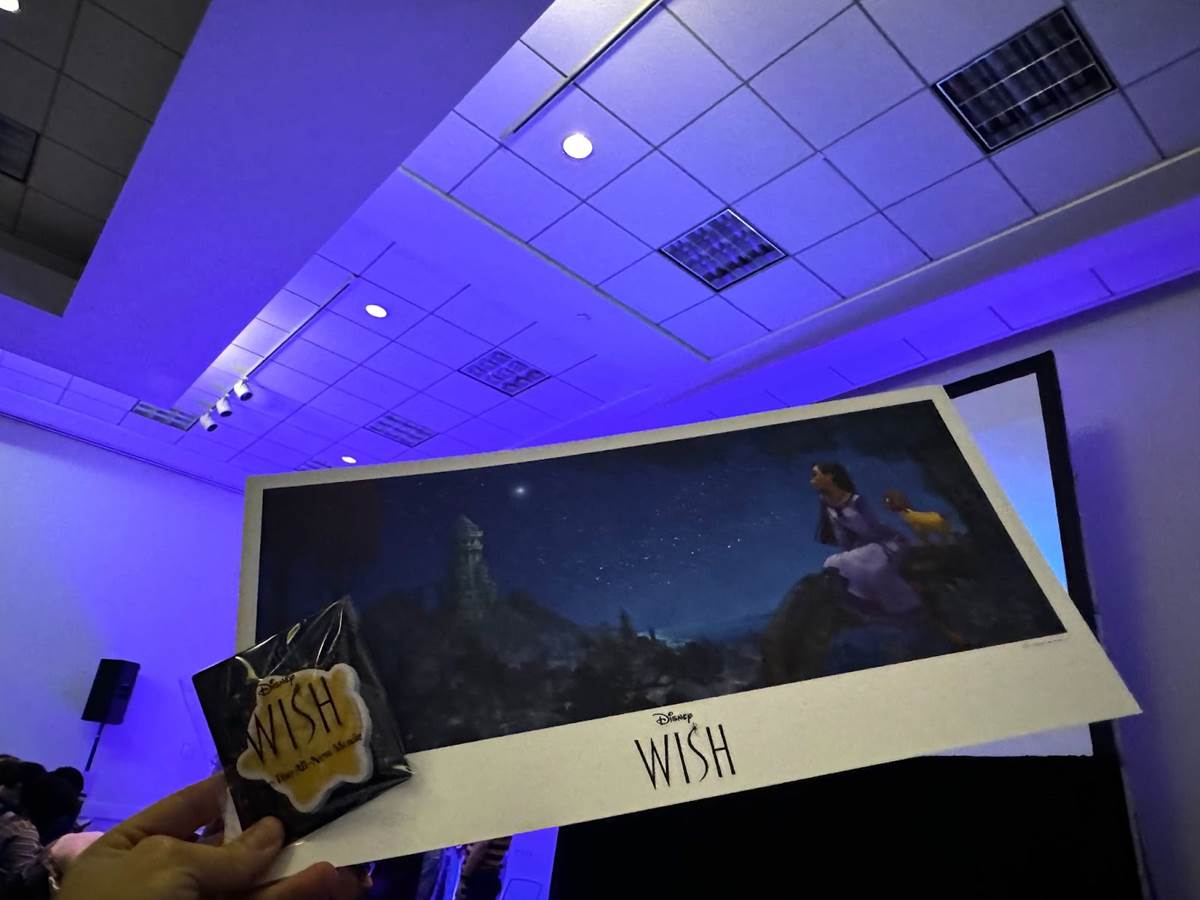Griselda Sastrawinata-Lemay knows a thing or two about costume design. After all, she helped outfit the Queens of Arendelle in Olaf’s Frozen Adventure and Frozen 2. At LightBox Expo, a packed crowd joined together to get a glimpse into the next array of animated costumes from a future classic, Wish. Here’s what I learned during “Wish: The Art of Costume Design.”
Asha’s Costume Design:
- Set in the medieval period, Griselda drew inspiration from the designs for Disney’s Sleeping Beauty from 1959.
- Asha’s father was European, while her mother is North African. As a result, the silhouette of her dress is inspired by European designs, while her jewelry and accents are North African.
- Following a Disney tradition that goes back to Snow White and the Seven Dwarfs, the design for all of the costumes in Wish are rooted in real designs from the era the story takes place in, with the exception of its lead character, who has some contemporary style. For Asha, this is best reflected in her hair, which is styled with a modern side braid.
- Zooming in on some fine details, one of the unique elements of Asha’s dress is pumpkin seeds. “When you watch the movie, it’s all going to make sense,” Griselda hinted.
- While reviewing the design packet for Asha’s dress, which becomes an aid outside of the studio for consumer products and Disney Parks, Griselda broke down the elements of Asha’s dress: a chemise base layer, a kirtle mid-layer, and a surcoat outer garment, which is then adorned by a belt.
- All of the shoes in the film are period-accurate, except for Asha’s. To represent the fact that she’s a forward thinker, she wears D'Orsays from the 1800s.
King Magnifico and Queen Amaya’s Costume Design:
- Before the characters were designed, preliminary concept art helped define the Kingdom of Rosas, the setting for the film. One of David Womersley’s earliest designs was for King Magnifico’s observatory, which inspired Griselda’s designs for his costume.
- King Magnifico’s cape is an important part of his silhouette, which casts an imposing quality in spite of the light colors of his exterior. The celestial interior of the cape was inspired by gold star mosaic patterns that were popular in medieval architecture.
- Because King Magnifico is the most glamorous person in Rosas, his costume must be the most detailed. However, it took less time to finalize his costume design than most of the characters in the film, with just 26 variations until his look was approved.
- Like the rest of the human characters in Wish, King Magnifico wears “turnshoes,” named for the technique to make them (they were turned inside out after being sewn so the seams were hidden on the inside).
- Griselda even got to design King Magnifico’s wedding ring, a complimentary piece to his wife, Queen Amaya.
- Queen Amaya’s designs borrow King Magnifico’s color palette but with a queenly silhouette. Her costume was designed to look lighter and more ethereal in contrast to her husband.
- The medieval period was when button holes were first invented, which were reserved only for the wealthy and elite. As such, Queen Amaya is the only character in Wish whose costume has buttons.
- Queen Amaya’s hair is done in a traditional crisp braid, with queenly gems inserted.
- In much of the artwork Griselda showed of Queen Amaya, she was constantly accompanied by a cat, who Griselda revealed was a deleted character as the story evolved.
Valentino Costume Design:
- Yes, Griselda Sastrawinata-Lemay designed Valentino the goat’s adorable pajamas. In fact, due to story changes, she made more variations of Valentino’s costume than any other character in the film!
- Throughout the iterative development process of Wish, Valentino’s character design changed depending on who he belonged to. In the final film, he’s Asha’s goat, but in earlier drafts, he belonged to different characters, including Asha’s grandfather Sabino. This would often change his physical appearance, including fur color and patterns, which necessitated different pajama options.
- Fun Fact: Production Designer Lisa Keene has a pet goat who she dresses in pajamas, which inspired Valentino’s outfit!
- Valentino’s final costume design features a specific type of collar that was popular in medieval clothing.
Crowds Costume Designs:
- Once the main character’s costumes were designed (Griselda Sastrawinata-Lemay didn’t work alone, with Meg Park creating additional costumes for the film), Griselda had a lot of fun outfitting the residents of Rosas.
- All of the character costume designs included a color key stage, and for these background characters, color keys helped define all of their costume options.
- Early in the story process, residents of Rosas were split between a woodsy hamlet and cool city folk. Griselda had designed costumes for both, but when that idea was scrapped, she got to mix those designs together to create the crowds that are seen in the film.
- Most of the costumes in the film are made of hemp and linen, common types of cloth in medieval times.
- Griselda shared that one of her favorite parts of the process is pairing skin tone and hair color with costume choices for the crowds.
The way Walt Disney Animation Studios approached costume design on Wish is more typical of how costumes are created for a live-action film. This isn’t usual for animation, where character designers are typically responsible for the costume design. However, this is the working preference of production designer Mike Giaimo, who also oversaw work on Frozen 2.
See Wish in theaters beginning November 22nd. Click here for more coverage from LightBox Expo.




